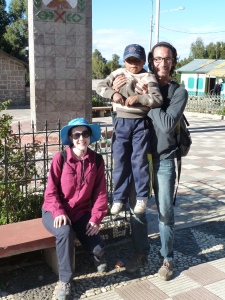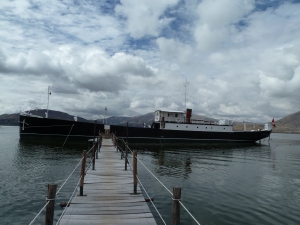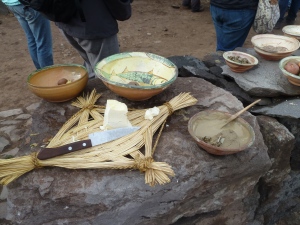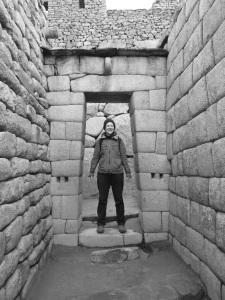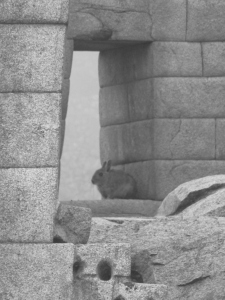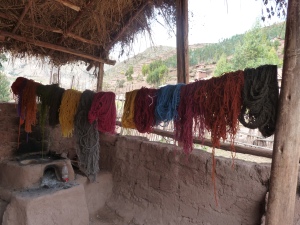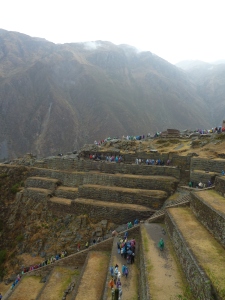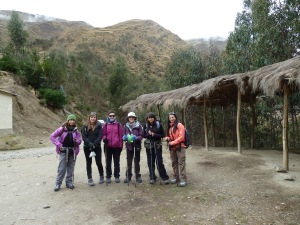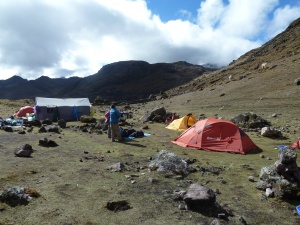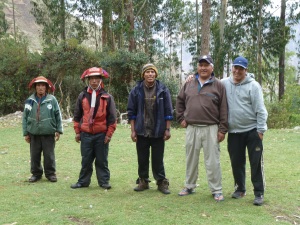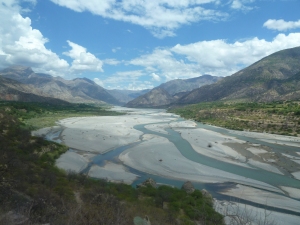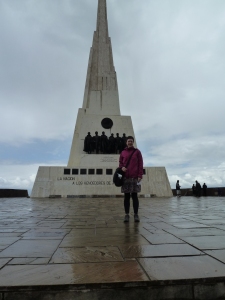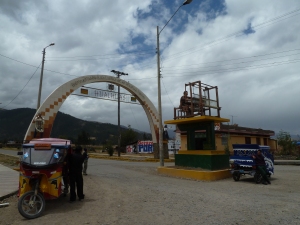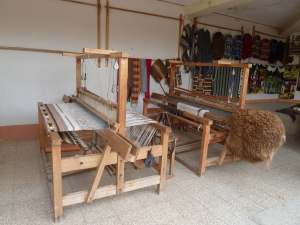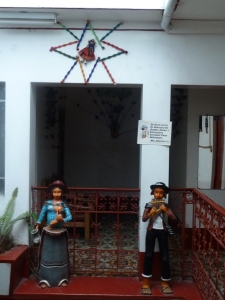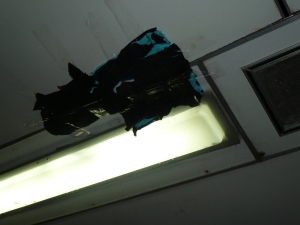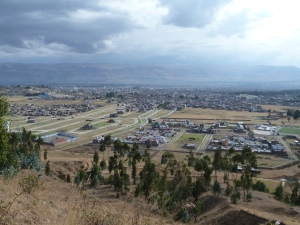Puno wasn’t the most picturesque city after being in Cusco and Arequipa. Highlights included taking a tricycle taxi (with a great view of the oncoming traffic!), hiking up to the condor mirador for great views, eating a s./2.50 (65p) two-course lunch, staying on Amantani island and visiting Taquile island, and staying on the Yavari ship on Lake Titicaca.
I took a boat trip to Amantani and Taquile islands and met some great people on the trip (Jackie, Jes, Rob, Jean Francois). The islands are a few hours from Puno and run on a community/collective basis. When you stay on the islands you stay with a family on a full-board basis, and the families are rotated to receive visitors about once a month. I was paired up with another solo traveller called Jean Francois from Montreal and we were allocated to a family. The mother had 7 children in total but only the two small boys still lived at home. The youngest, Alexander, was allocated as our tour guide for the afternoon so he showed us how to get to the plaza and where to start the walk up to the highest points of the island with some ruins. The moon was out and a storm was coming in so the sky was an amazing blue colour.
The families on the islands survive from growing some basic food stuffs (mainly potatoes) and supplement their income from tourism and selling weaving. There is only solar power electricity on the island and water is also scarce. The guidebook advised to take fruit as a present for the host family, which I did. I’d been worried about telling them I was vegetarian but I needn’t have worried. The islanders only eat meat on special occasions so we were filled up with tasty carbohydrates (and one egg). I’m not sure if I’ve ever had rice and pasta at the same time but it was filling.
A few of us from the boat had all agreed to meet in the plaza in the evening but little did we know our host families had other plans for us. After dinner we were brought traditional clothes to put on and invited to a fiesta in the house I was staying in. Some local students had been roped in to play music and beer was for sale. We all had a lot of fun dancing to the traditional music and trying to learn some local dances, which seemed to involve dragging each other round in circles. As we had to put the traditional clothes over our normal clothes, we all looked quite funny with our walking shoes and travel trousers under our skirts and ponchos!
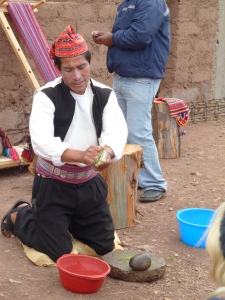
A local Man (you can tell he's married by the type of hat) showing us how to wash wool with a local plant.
The next day we went to Taquile island which is famous for its weaving. There were some amazing examples for sale in the island’s co-operative shop and I got a small woven belt. We then had a delicious lunch at the co-operative restaurant, which had an amazing view. Like the host families, the running of the restaurant is rotated around different families so that everyone gets a chance to earn some income.
The walk back down to the boat was spectacular. We could have been on a mediterranean island with the blue sky and crystal clear water.
I then stayed two nights on a living museum, the Yavari ship, which is the only way to stay on a boat on Lake Titicaca. It was a bit out of my budget but such a unique experience that I couldn’t resist. The ship was built in England and brought to Lake Titicaca in bits by sea, rail and then by mules and llamas over the Andes. It was estimated that it would take six months to bring the pieces over the Andes but it took six years!
Captain Giselle Guldentops welcomed me to the ship and gave me a guided tour, including the engine rooms. They have managed to retain many of the original features of the boat and it is well preserved because it is located in a fresh water lake rather than the salty sea. I was allocated the bottom bunk in the Inca cabin and the next day treated to an amazing breakfast while sat in the original Captain’s chair.
The next night another English couple arrived to stay on the boat and we enjoyed a delicious dinner brought over, course by course, from a hotel on the mainland. Staying on the boat was amazing and the B&B services supports a lot of the ongoing conservation work that the boat requires. The Yavari project needs to raise about 300,000 dollars to make changes to the ship in order to make it sea worthy to sail passengers across Lake Titicaca in the future (at present they can only sail with crew).
In Puno I also did a tour to some local burial towers but it chucked it down with rain the whole time. The tour highlight was eating potatoes with a local clay sauce.
